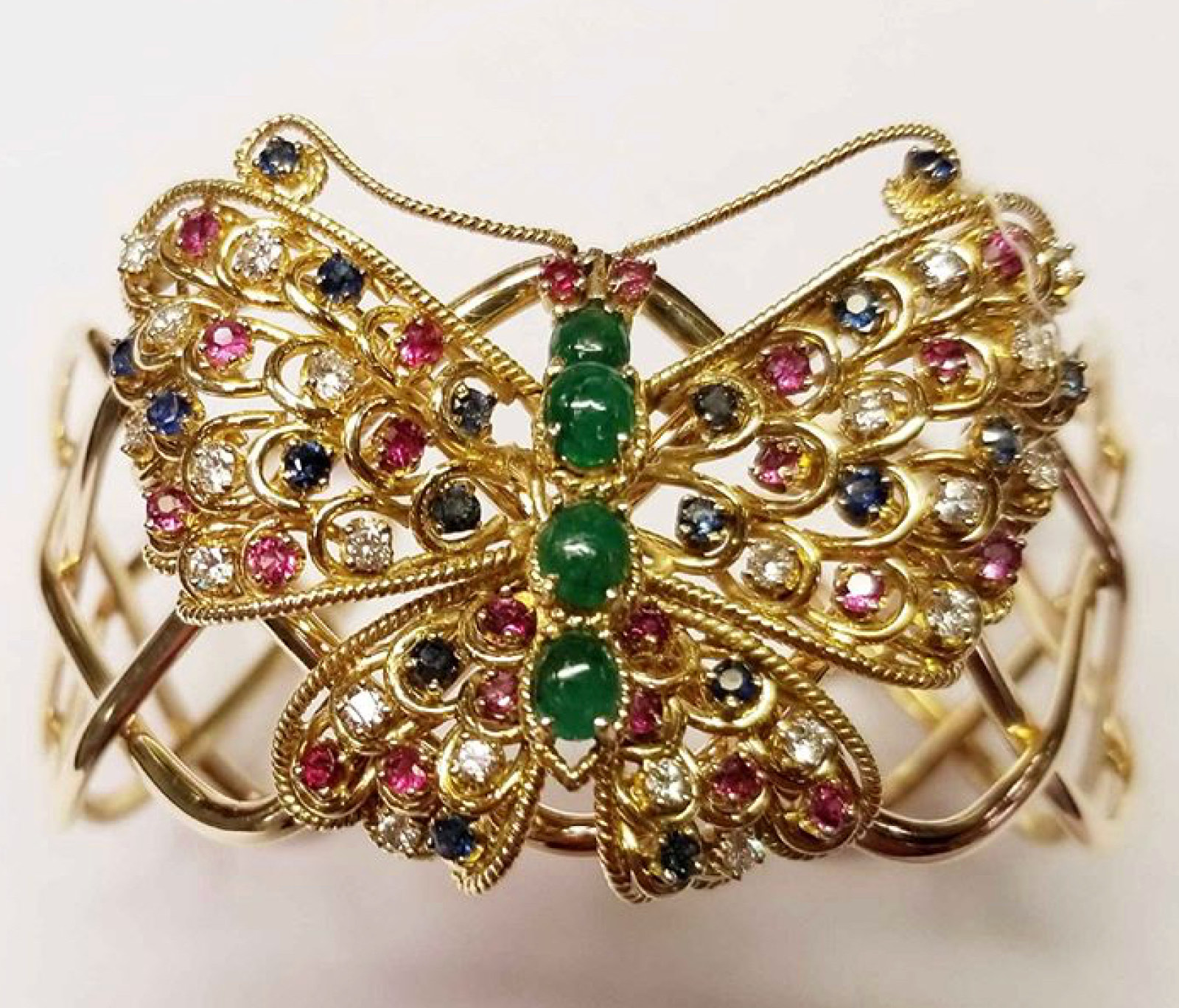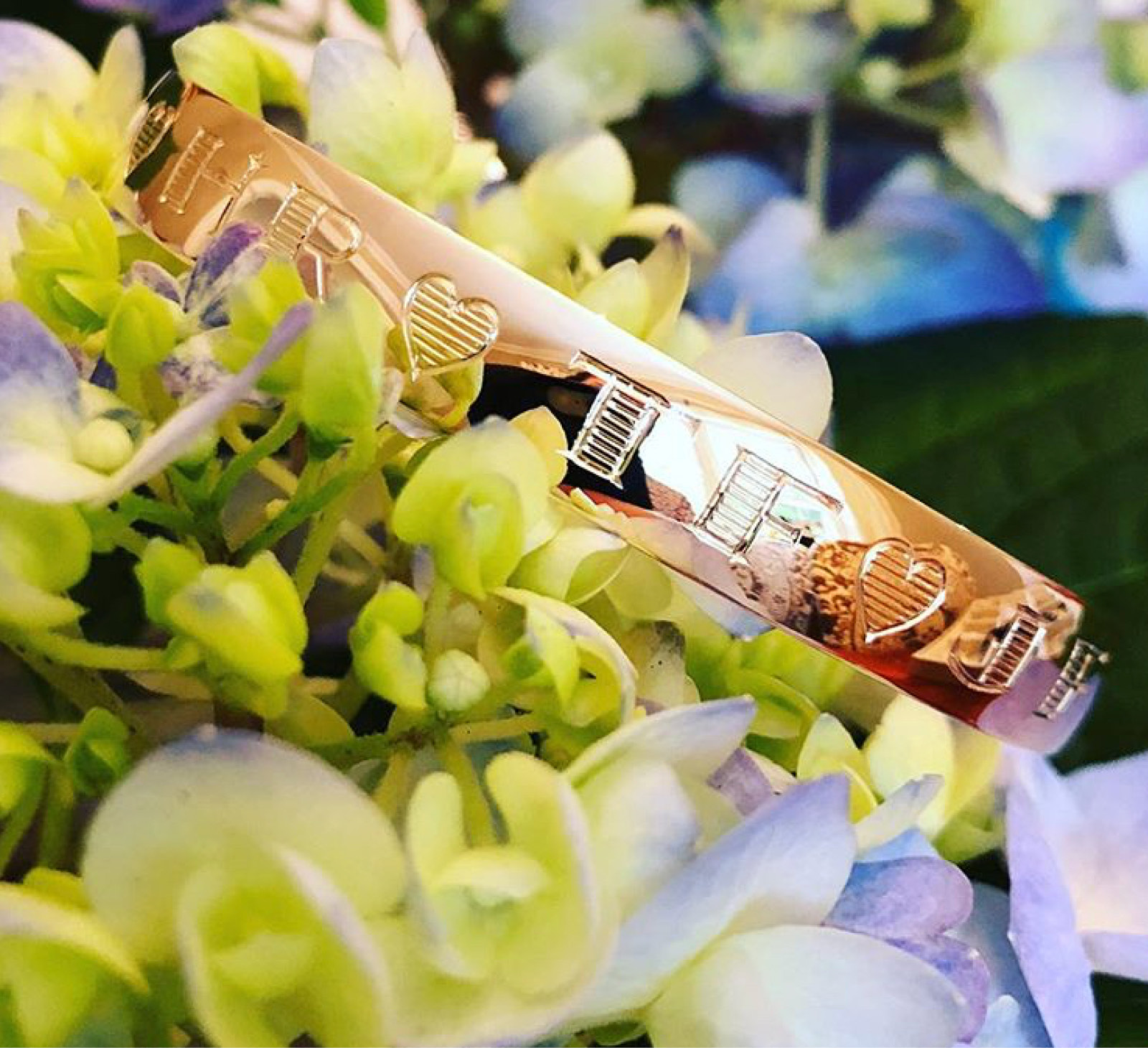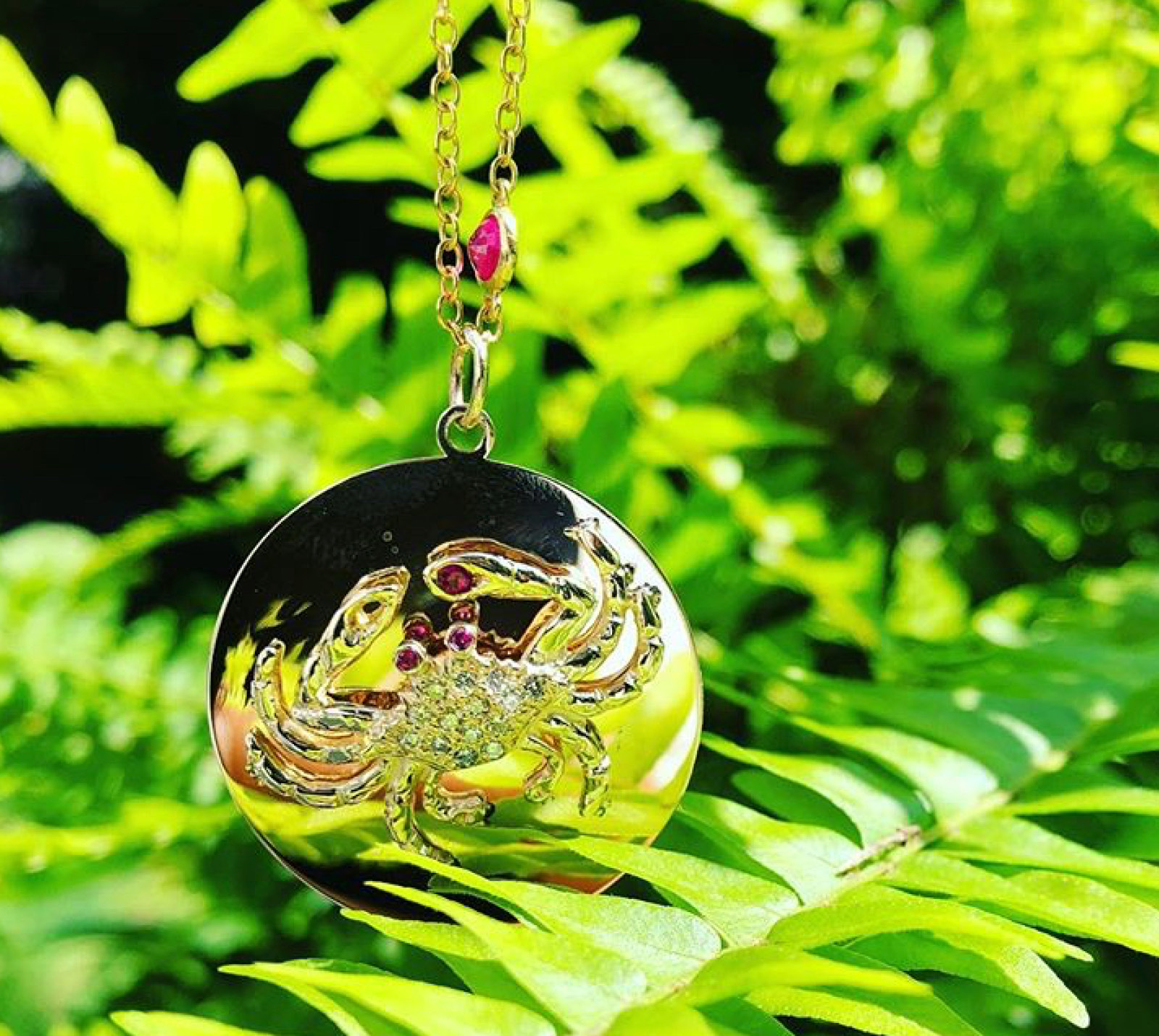
I first met jewelry designer Julia Ballentine during our boarding school years at Miss Porter’s in Connecticut. In fact, that’s where Julie first discovered her love of jewelry as well.
Miss Porter’s allowed Julie to create an independent study class where she could delve into the study of jewelry. Her fascination with jewelry faded slightly during college until her love of art led her to study art history in Florence. As many stories of creatives go, Italy is where her interest in jewelry resurfaced.
Fast-forward a few years to stints at powerhouse luxury brands such as Christie’s and Tiffany & Co., which expanded Julie’s jewelry education. She’s a gemologist, a designer, and a great friend.
When there is an occasion to commemorate—whether a birthday or an anniversary—we always go to Julie for the most original and special pieces. In this world of fast trends and disposable fashion, fine jewelry is a timeless investment that can become a family heirloom. The quality and originality of Julie’s pieces mean that each client gets something unique and customized to their desires and personality. Meet Julia Ballentine.

You have two notable names on your resume: Christie’s and Tiffany & Co. What did it mean to you to work for such iconic brands?
Christie’s and Tiffany gave me the most incredible education and the foundation to go out on my own. It wasn’t just about connections but what I was taught about quality and standards. Ever since I was a child, I knew that I would be working for myself someday. My time at Christie’s and Tiffany prepared me for that.
Why is important to work for a big business outfit before becoming an entrepreneur?
I worked at the press office for free at Christie’s in London just to get my foot in the door. At Tiffany, I worked in the merchandising department to start but was eventually moved to product development. That was my dream job. I was able to help create some of the most beautiful jewelry in the world.
When you are awarded a job at big companies like those, sometimes the position might not be your first choice, but you take it and the many skills that come along with it. A department that you never imagined working in can provide you with information that you can reference later. At Christie’s for instance, one not so glamorous job was in shipping. That department taught me about imports, tariffs, and customs. It’s not always about the contact but the process. You never know how you are going to need certain skills. Just because I wasn’t doing exactly what I wanted to do in the beginning, didn’t mean that I wasn’t gaining invaluable information.

What about jewelry are you attracted to?
Jewelry is beautiful and timeless. When I create a piece of jewelry, I am making something that’s designed and intended to last. I remember my grandmothers coming to visit often, and when they did, their bags of jewels traveled with them. I pilfered through their collections. It was something to connect over. Each was a little piece of artwork. When I look at jewelry that was given to me, I appreciate the sentiment that accompanies it.
So much of what I do today is redesign old jewelry. It means something for me to be able to re-create beauty for someone. A brooch can be a pendant or attached to a cuff bracelet. Because we rethink what a piece can be doesn’t mean that the history goes away. I love the process of redoing a jewelry collection for someone. Customers want pieces that they can actually wear.
Just like clothing or home design trends, key jewelry pieces are easy go-tos. How do you feel about buying a trend piece of fine jewelry vs. something special and unique?
I understand why people want the pieces from designer brands. They hold their value, and you can resell them. People love a classic, and there is something safe about having an object that everyone else has too. But there is nothing unusual about those pieces, and they are easily copied. I love the overall trends that are returning instead of the “it” bangle. For instance, chunky yellow-gold bracelets are making a comeback. Of course, there are plenty of new options to buy but also so many vintage pieces on the market. It’s really wonderful to see gold come back, and it’s at an all-time high for value.
It’s fun to have inexpensive trendy pieces, but jewelry should be considered the same way that apparel is. Buying a new chain for the fall, for instance, is like adding a new blazer to your closet. If you invest in a chain, that’s your handbag, that’s your new blazer. That one piece of jewelry can take you so far. Investing in one chain or several good chains update what you have going on more so than any other piece.

But jewelry is expensive. How should you shop for jewelry?
Buying jewelry classics should not be thought of as splurging, rather investing sensibly. Owning a good pair of gold hoops is worth the money. Another smart investment is a quality gold chain. And when it comes to rings, quality must be a consideration. Rings take on a lot of daily wear and tear. If you want to save your dollars, earrings are the best category to do that. They don’t require as much sturdy construction. Diamonds are always in style, but if the expense is beyond what your wallet allows, good fake diamonds are readily available.
When it comes to responsible shopping, I’m always mindful of environmental issues. Jewelry should be real, not something that ends up in a landfill.
What is your own personal style when it comes to jewelry, and how do you help your clients define their own?
I don’t go anywhere without my gold bracelets, my diamond earrings, and my engagement ring.
My personal style definitely informs what I design for my business. I love my cigar band. Mine has my monogram as well as those of my husband and children. I also wear Deco bangles, engraved for each of my children so that the engraving looks like a pattern in the design. It’s so personal to me, and I want my clients to enjoy a similar experience. My favorite pieces are the ones that are hand-engraved. The technique is deep, unlike machine-engraving that just scratches the surface. This technique makes me so happy.
For clients, I want them to choose pieces that are comfortable and a foundation that can be built upon. A simple gold bangle can easily mix with a fun piece of costume jewelry or another bangle that is more unusual. Another idea is a trio of chains in varying lengths with one showcasing a timeless pendant. It’s also important that my clients are honest about their own lifestyles. I don’t recommend buying a delicate chain if a client tells me that she sleeps in her jewelry. My biggest rule for helping my clients develop and learn their own style is to go through what they have already. If it’s something that isn’t worn or used, it’s not their personal style.

What do conversations with your clients about custom pieces sound like?
There are so many options. Sometimes people will bring in pieces that are damaged, and then it’s clear that we need to rethink. We examine each piece to determine what we want to get rid of. Sometimes stones are not worth anything. That’s the early part of the conversation. Then we go on to talk about what the piece is for. Is this for personal use or will it be given to someone special? What type of new piece is needed in their existing jewelry wardrobe? It’s so personal and such a fun conversation to have.
After that, the creativity begins. Some people understand exactly what they want when they walk into the door. My aesthetic tends to lean traditional with a creative kick, and that resonates with my clients. Having the background at Tiffany & Co., where we were deep into the construction of jewelry, makes it easy for me to get things done properly. My clients appreciate that attention to detail and quality.
Speaking of gold and stones, what can be done with old pieces of fine jewelry?
Resale on jewelry in general is touchy, so I encourage people to hold onto what they can. But jewelry should not be left in safe deposit boxes, where it never sees the light of day. You can melt pieces that might be damaged and then use that as currency toward a new purchase. I see a lot of broken earrings and hollowed bangles that can be reused.
Diamonds are so strong, and once you have them, they can be remounted into a ring or pendant. Bezel setting diamonds into a pendant, and re-creating rings are popular redos of old stones at the moment. Mounting a brooch onto a cuff or large disk that can be worn as a pendant is also a popular fix and upgrade.
You seem to have a special affinity for the history of jewelry. Are their specific parts that draw you in?
I’m a history nut, and I love a good biography. I don’t only like to focus on the historical figures who wore stunning pieces of jewelry, but also the craftspeople. I always want to know how the jewelry was placed in time. Was it worn to big parties or does it signify royalty? Was it made especially for an aristocrat, or was a piece from a merchant? Take cameos. Is the silhouette of someone of importance? I love the backstory. A piece of jewelry represents what was going on in the world during that time. And history never goes away. That alone, makes jewelry timeless. Jewelry always presents knowledge about fashion, creativity, artistry, and craftsmanship. Its value is intrinsic.
Take a moment to dream of your next heirloom at Julia Ballentine Fine Jewelry.

